Best mouse for music production 2026: The finest mice, trackpads, and trackballs you can lay your hands on
Accelerate your DAW workflow with the best mice and input devices from Logitech, Kensington, Apple, Contour and more
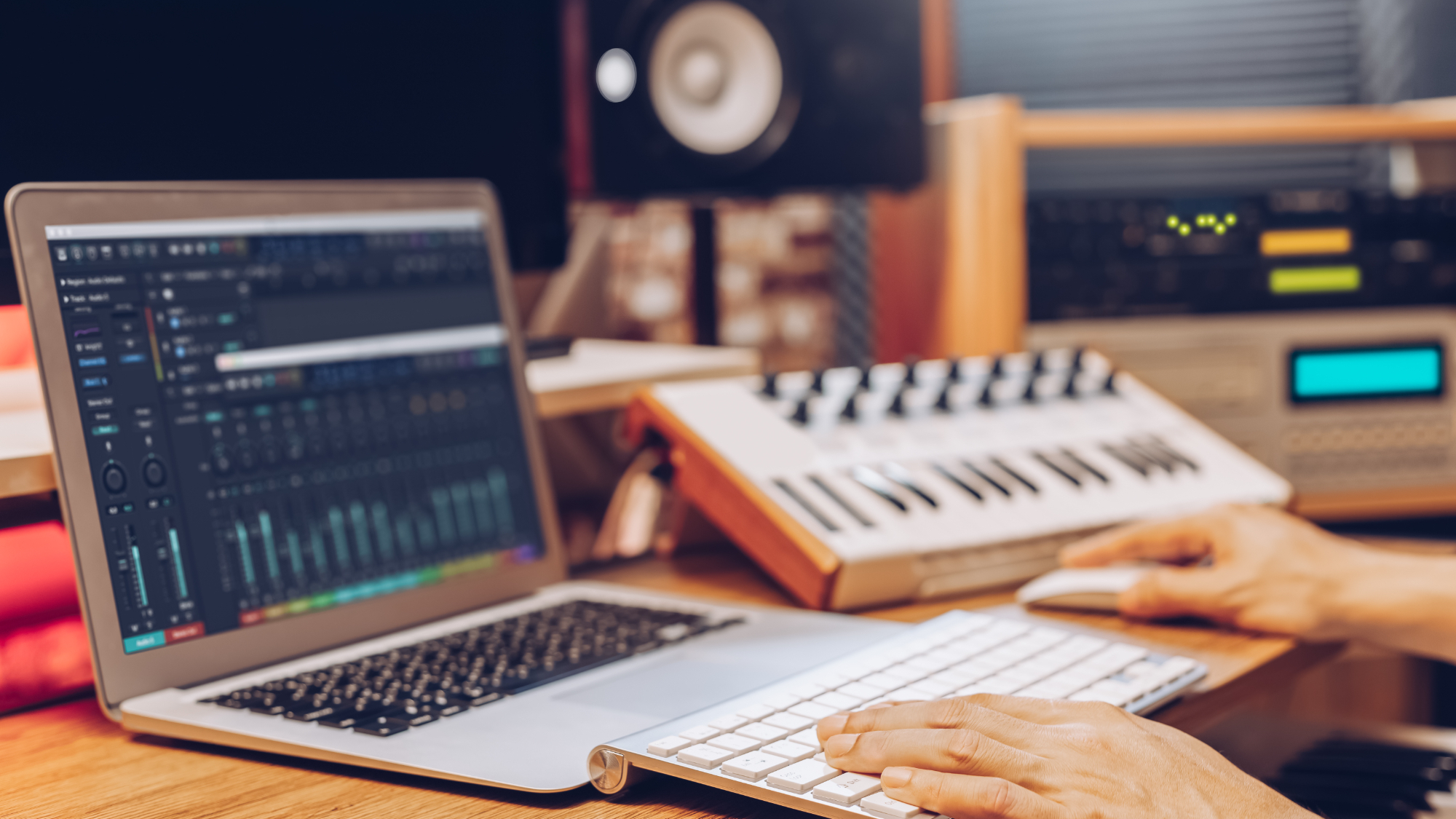
Buying a superior computer mouse is a superb way to supercharge your music production setup. The best mouse for music production will track faster, more accurately and more reliably, while a smattering of programmable buttons will have you carving effortlessly through even the most repetitive tasks.
There's lots to get obsessively excited about when speccing a PC. Wicked processor speeds, unrivalled graphics power, ultra-fast SSDs, humongous amounts of RAM and plenty of flashing LEDs are all extremely gas worthy. But mice?
Most of us end up using the basic two-button rodent that comes bundled for free. Which is a mistake because, as my granny loved to warn me, the only free cheese is in a mouse trap. What's the point of the super-fast machine if it's always waiting for you to catch up with your clunky mouse moves?
If you're currently bogged down in two-button hell, investing in a better mouse will not only see your productivity soar, it may even help to keep you healthier. Read on to discover the very best mice, trackballs and trackpads for music production. Want to know the difference? Head to our buying advice section.
Best mouse for music production: Our top picks
The Logitech MX Master 3 is our weapon of choice. Not only does it boast many impressive mechanical and technological features, but its comprehensive integration with leading creative software packages is the icing on the cake. With its seven programmable buttons, innovative scroll wheels and an accurate Darkglass sensor, it's difficult to see how Logitech can improve on this latest version.
Our second recommendation is the Contour Shuttle Pro V2, and yes, we are sheepishly aware that we're recommending a bit of kit that, strictly speaking, isn't a mouse. Still, we have good reason to do so. The Shuttle Pro V2 is a superb companion device that's designed to be used in combination with your mouse.
So, while you're busy clicking away with one hand, your other hand can be scrolling through tracks with the Shuttle's jog wheel while, at the same time, triggering shortcuts from its 15 programmable buttons. It's such a beautifully efficient way to work.
Best mouse for music production: Product guide

1. Logitech MX Master 3
Our expert review:
Specifications
Reasons to buy
Reasons to avoid
The Master MX mouse just keeps getting better. This, the third iteration, boasts a whopping 4,000 dpi resolution and, thanks to its Darkglass sensor, will track accurately on almost any surface, including glass.
Logitech claims that its MagSpeed Electromagnetic scroll wheels – there's one up top and a thumbwheel on the side – are 90% faster and 87% more precise than its regular mice, performance boosts well worth having if you're forever scrolling through tracks and selecting regions.
The biggest speed kick will come from programming its seven buttons to replace commonly used keystrokes. Pretty much any app is ripe for such workflow hacks, including Logic Pro, Cubase and Ableton. Content creators will be pleased to learn that the MX Master 3 even ships with predefined customizations for Adobe Photoshop, Adobe Premiere Pro, Final Cut Pro, Microsoft Office and more.

2. Contour Shuttle Pro V2
Our expert review:
Specifications
Reasons to buy
Reasons to avoid
Okay, well spotted, the Shuttle Pro V2 is not a mouse. However, it deserves a place in this guide because it's kinda mouse-like, and it may be a more sensible buy than replacing your existing mouse. Alternatively, invest in both this and a new programable mouse and you'll enjoy a real powerhouse of a setup. Let's explain.
The Shuttle Pro V2 is best described as a mouse companion that's worked with your free hand – the left hand, if you're right-handed. It comprises a shuttle/jog wheel combo for fast/slow track scrolling, and fifteen programmable buttons to fire off shortcuts and macros.
Essentially, this clever little device enables you to navigate (and much more) with your free hand while continuing to do mousey editing-type stuff with the other. Working precisely with your non-dominant hand takes time but once mastered you'll benefit from a huge boost in efficiency.
The buttons are fully customisable, but it ships with pre-configured settings for most popular DAWs and video editing software too, making it ideal for music producers and creators.
Built quality is excellent, it's weighty enough to stay put during use and the footprint is manageable for most desks. For those of you constantly on the move, Contour also makes the smaller, less expensive and admittedly slightly less capable Shuttle Xpress.
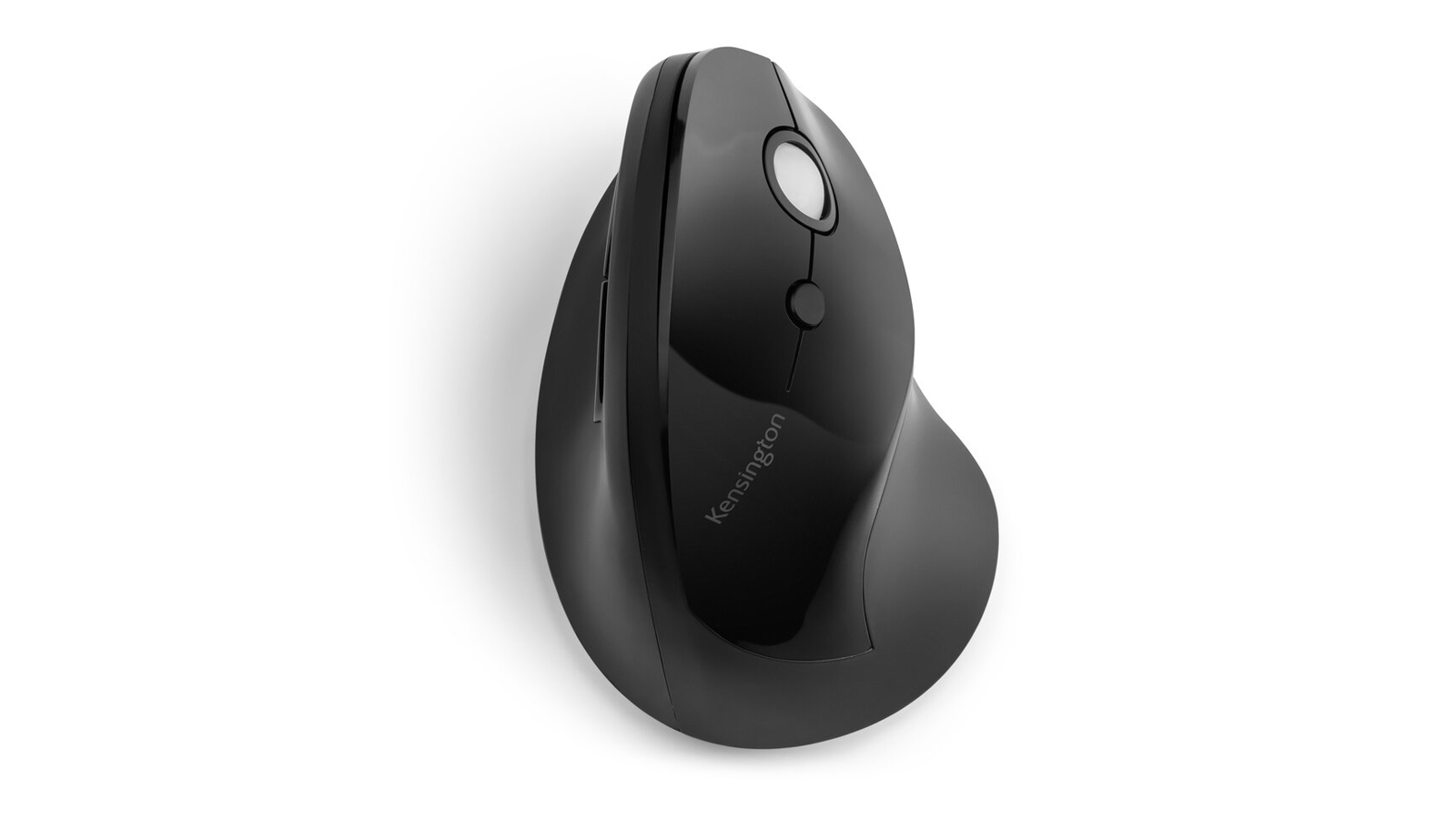
3. Kensington Pro Fit Ergo Vertical Wireless Mouse
Our expert review:
Specifications
Reasons to buy
Reasons to avoid
Here's a wireless mouse that offers both comfort and speed. Let your hand fall naturally to your desk and it'll assume a handshake position that requires further inward rotation to hold a traditional mouse. To counteract this rotation, the top face of the Pro Fit Ergo Vertical mouse is tilted to 46.7 degrees, enabling your hand and forearm to adopt a more comfortable, neutral position.
Admittedly, the chunky looks are a bit odd, and the height takes some getting used to, but Kensington claims that it eliminates soft tissue compression, which has to be a good thing.
Six programmable buttons, a high resolution 1,600 dpi laser and a scroll wheel – a small ball, in truth – that can navigate both horizontally and vertically make this a fully-featured mouse that's ready to speed you safely through long sessions at your DAW.

4. Kensington Expert Mouse Wireless Trackball
Our expert review:
Specifications
Reasons to buy
Reasons to avoid
It may only have a resolution of 400 dpi, but don't let that fool you, the Expert Mouse Wireless Trackball can show an impressive turn of speed when you need it. Unlike similar products that boast less impressive balls, Kensington's range-topper features a big weighty red 'un that's approaching the size of a billiard ball.
This provides you with the necessary gearing to fling your cursor across a large screen with just a quick spin of your fingers. At slower speeds the ball is plenty accurate enough for music production tasks and, like most trackballs, it's a godsend to be able to click on a critical selection without the risk of inadvertently nudging the cursor.
It's not perfect, four buttons is only just enough, it's a little too large to stuff into a laptop bag and you cannot scroll horizontally without holding down a modifier button. Nevertheless, the Expert Mouse Wireless Trackball is a joy to use, especially in crowded studios where space is at a premium.
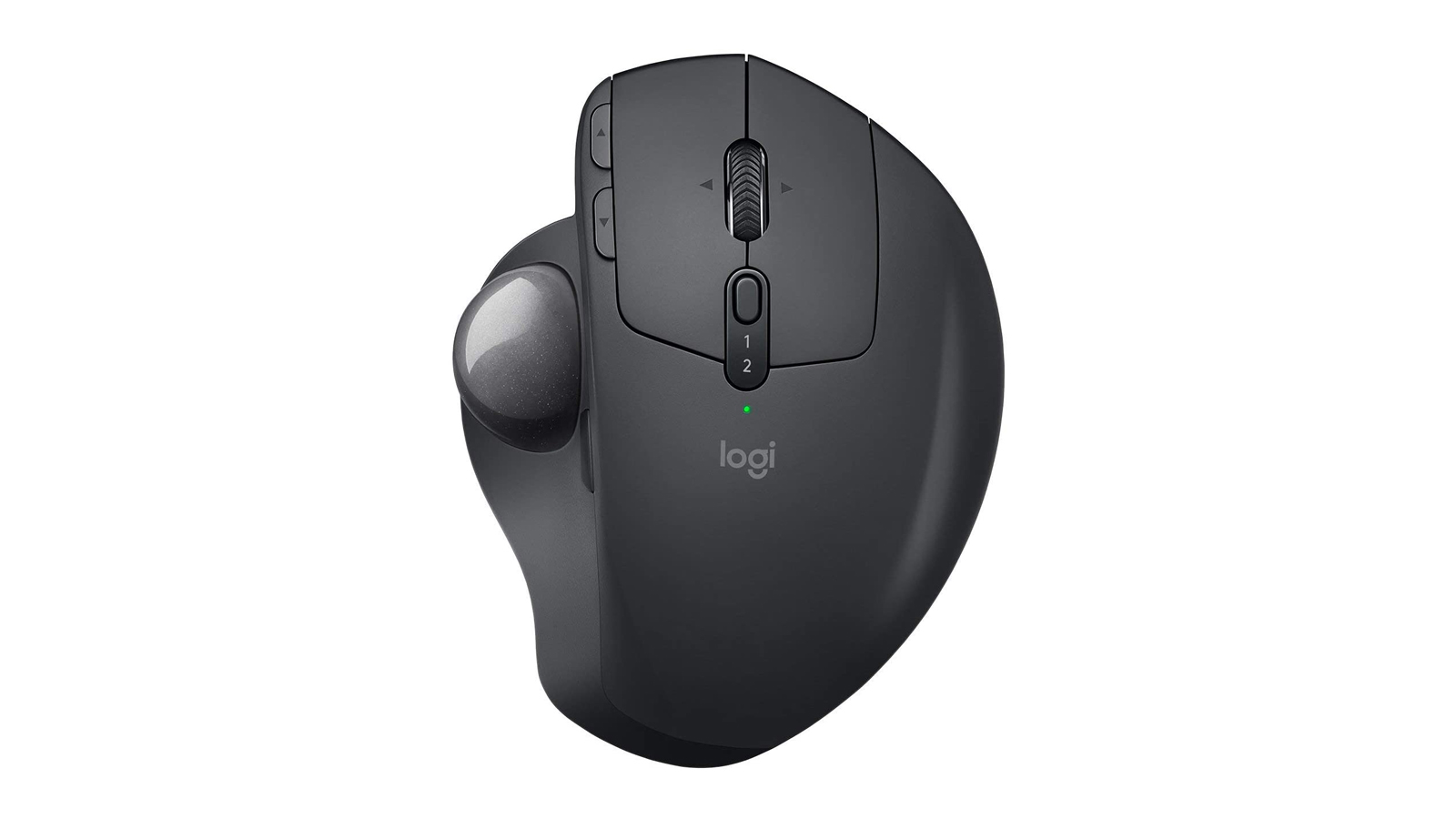
5. Logitech MX Ergo Advanced Wireless Trackball
Our expert review:
Specifications
Reasons to buy
Reasons to avoid
As its name suggests, this trackball's raison d'être is healthy ergonomics. It's a strange looking beast, like the lovechild of a vertical mouse and a trackball, but it's claimed to reduce muscle activity by 20% and improve both wrist and forearm comfort. To facilitate the latter, the MX Ergo can be tilted up to 20 degrees from horizontal to suit your arm's natural posture.
Tracking with the thumbwheel is both fast and accurate. If you feel the need for speed one minute but you're work demands precision the next, no worries. A handy button, located just behind the ball, will instantly switch you between fast-tracking and precision modes.
Six programmable buttons are just waiting to be assigned shortcuts for your favourite DAW, or any other software for that matter. Just like its cousin, the Logitech MX Master 3, it comes complete with predefined shortcuts for Adobe Photoshop, Adobe Premiere Pro, Final Cut Pro, Microsoft Office and more.
In fact, if the superb functionality of the MX Master 3 appeals but you'd rather have a trackball than a mouse, the MX Ergo could be just what you're looking for.

6. Apple Magic Trackpad
Our expert review:
Specifications
Reasons to buy
Reasons to avoid
Apple's Magic Trackpad shares a similar minimalist aesthetic with the Magic Mouse, but with a lot more functionality.
Appearance wise, it's nothing to look at, which is great. Just a cool 6" x 4.5" slim wedge of austere aluminium and glass that'll take up next to no space on your desk. Unlike the Magic Mouse, it can be used wired or wireless, which is an advantage you'll appreciate when caught out with a drained battery during a critical job.
As you'd expect, it works just like an oversized modern laptop trackpad. You can lightly track and swipe to your heart's content on the pressure sensitive surface, which because it has no moving parts uses haptic feedback to register clicks.
But the feature that really sells the Magic Trackpad to us is Apple's Force Touch technology, which opens up a tremendous amount of functionality in applications such as Garageband and Logic Pro. Pressing a little harder on the glass surface can trigger a host of useful shortcuts, including adding notes to the Piano Roll and specifying automation points.
It's available in two colours, but even though they both function identically the black version is currently more expensive than the white. Thanks Apple.
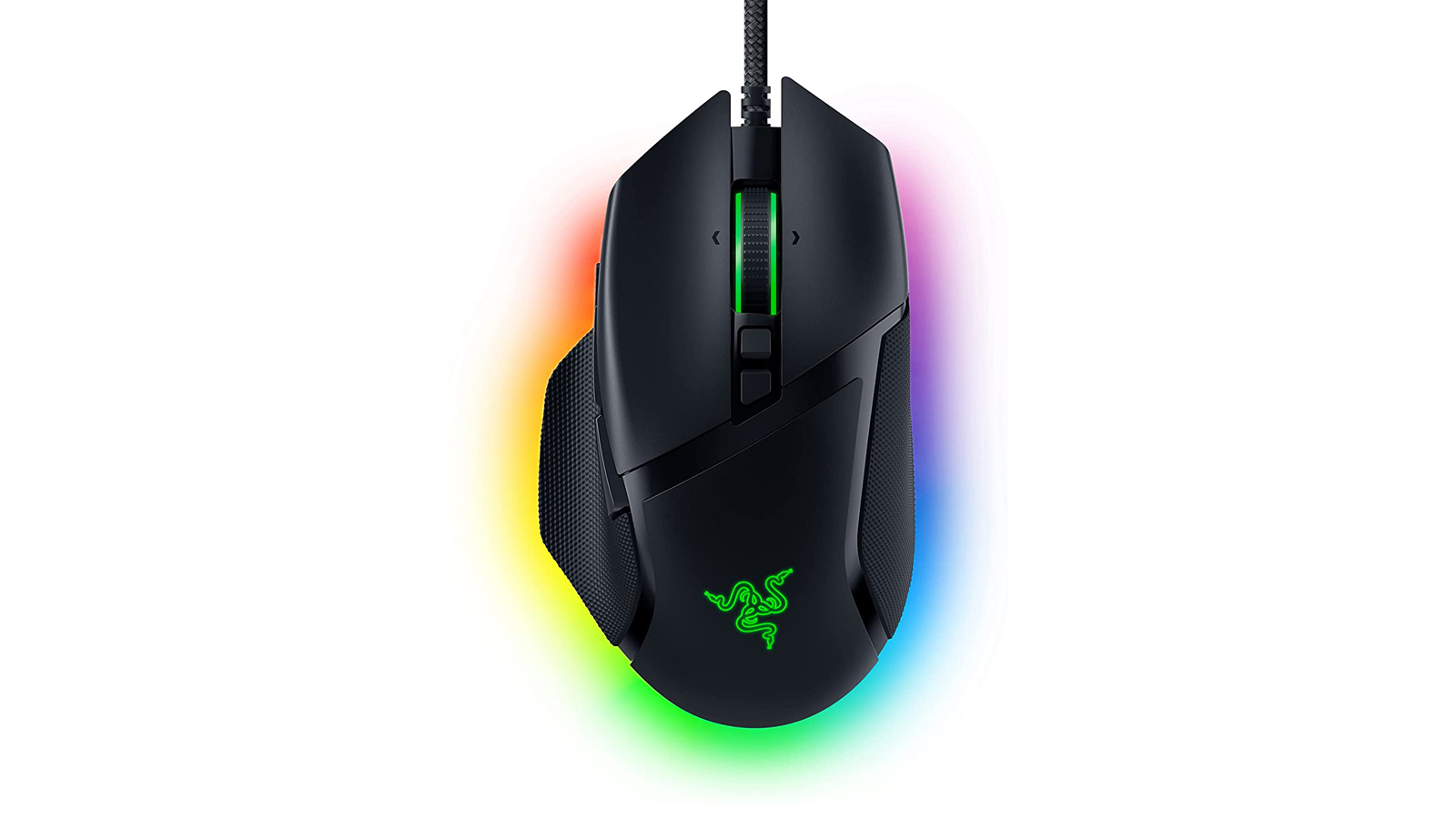
7. Razer Basilisk V3
Our expert review:
Specifications
Reasons to buy
Reasons to avoid
The Basilisk is an out-and-out performance-orientated gaming mouse, built for leaping whoever wields it through fantastically improbable challenges while deploying grenades and other deadly weaponry. So, what is it doing in this buyer's guide?
In common with many gaming mice, the Basilisk has been engineered to be very responsive and extremely precise. It also boasts a multitude of programmable buttons that can replicate common keystrokes or trigger a host of effort-saving macros. So, it doesn't take much imagination to see how a gaming mouse could bring new levels of accuracy and efficiency to your DAW workflow.
Its crowning feature is its 26,000 dpi optical sensor, though us musos will probably be more interested in its ultra-slick four-way scroll wheel, smooth PTFE feet and 11 – yes, count 'em – 11 programable buttons.
It also performs a light show that puts the Blackpool Tower to shame, but if that's not your thing you can dim the LEDs.
It could be a game-changer.
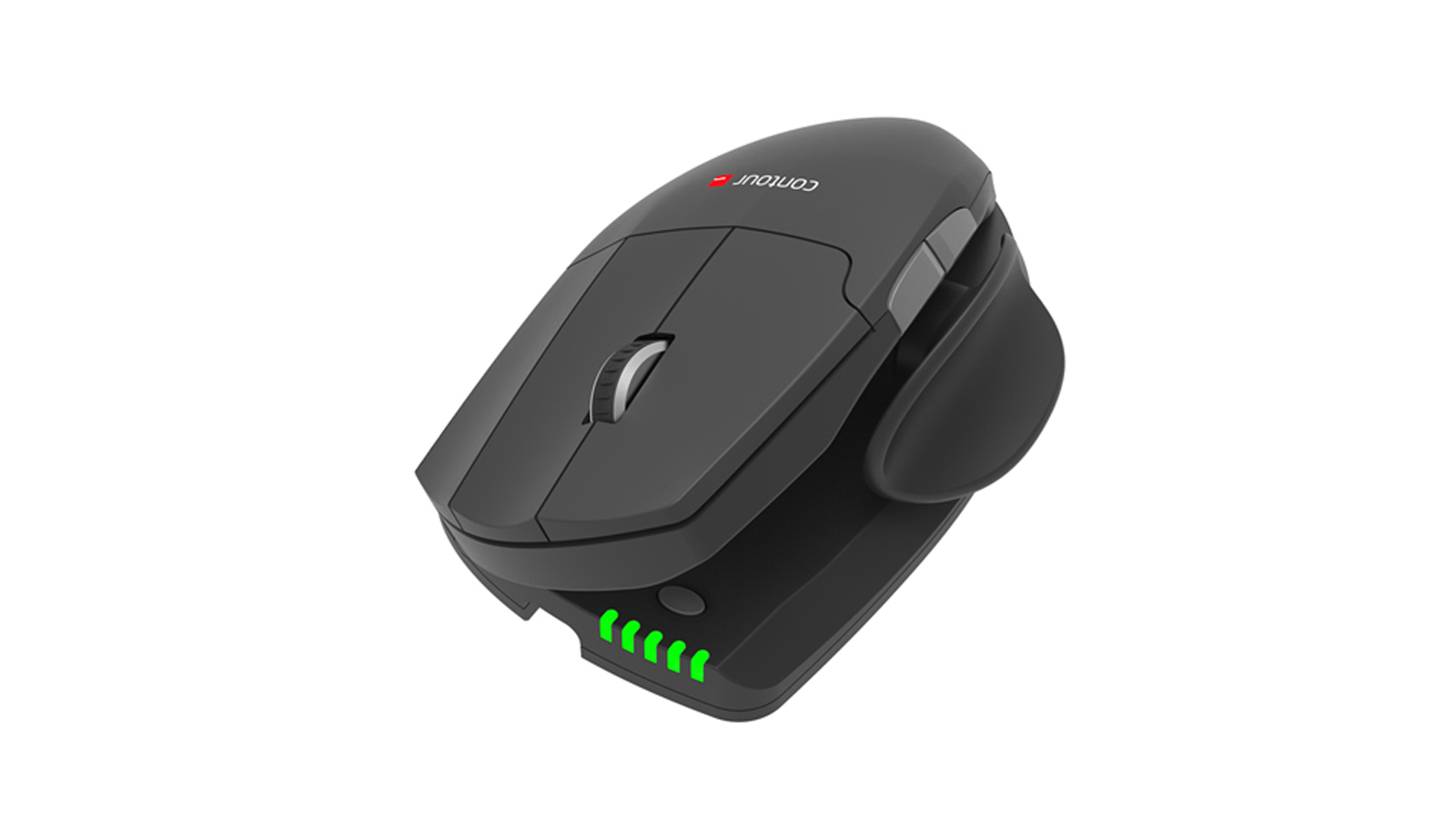
8. Contour Unimouse Wireless
Our expert review:
Specifications
Reasons to buy
Reasons to avoid
It's easy to see why the Unimouse won Contour a Red Dot Design award, it must be one of the most adjustable mice available on the market. In theory, it's a vertical mouse but in practice you can decrease the amount of tilt to a relatively subtle 35 degrees or opt for a more acute 70 degrees. Whichever is more comfortable for you.
The thumb support is also completely adjustable in all directions – in/out, up/down, forward/backwards, inclination and rotation. Get the position right and Contour claim that it will help you maintain a more relaxed grip, lessening the chance of repetitive strain injuries. For you southpaws out there, the Unimouse is available in a left-hand version too, which is something of a rarity.
If all this sounds a bit clinical for creative use you'll be pleased to learn that the Unimouse boasts a very respectable 2,800 dpi sensor and has seven buttons, six of which are programmable. It's a shame the scroll wheel only scrolls vertically but you can easily remedy this oversight by partnering it with a Contour Shuttle.
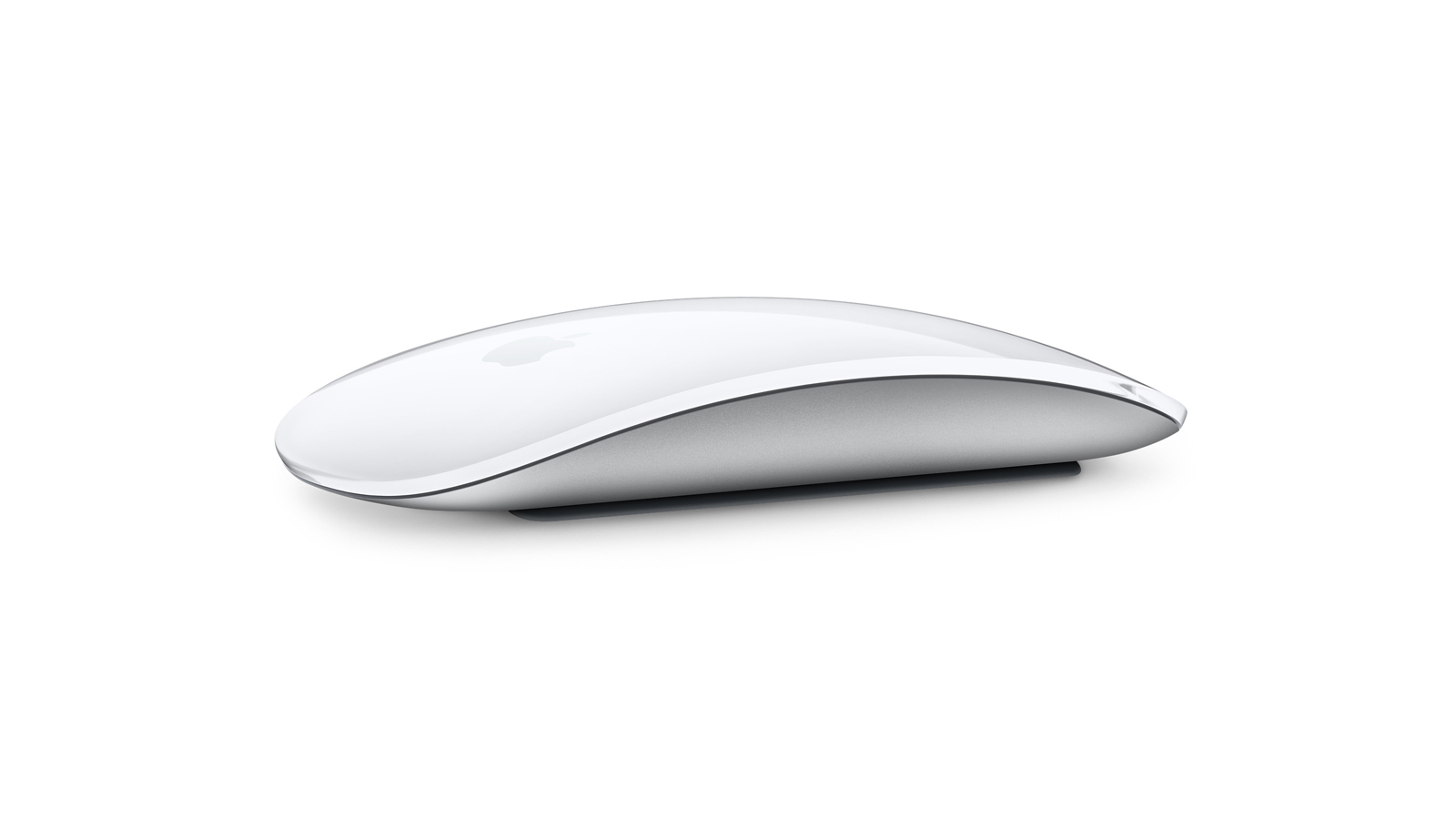
9. Apple Magic Mouse
Our expert review:
Specifications
Reasons to buy
Reasons to avoid
This is an astonishingly beautiful mouse that's way ahead of the competition in terms of aesthetics, if not ergonomics. Frankly, it's a device you'll either love or hate.
It looks fabulous, blessed with a flowing, streamlined silhouette that's sleek, purposeful and stylish. As with all Apple products, there's definitely a characteristic 'less is more' vibe going on here.
The Magic Mouse's minimalist aluminium base is capped with a couple of millimetres of featureless, smooth-as-glass perspex, with no visible buttons or scroll wheels. Essentially, what Apple has done is stuck a trackpad on the top of a Bluetooth mouse.
Scrolling is a wonderful experience, with the very lightest of touches sending your cursor scampering right, left, up or down. It's completely effortless. On the downside, beyond configuring left and right buttons, plus a few gestures, functionality is rather limited.
Apple doesn't publish a resolution figure for its Magic Mouse, but performance is sufficient. Similarly, wireless operation is limited to Bluetooth, which isn't the fastest, most reliable technology but it does the job.
In use, in contrast to some of the bulkier mice in this guide, your hand will float over the top of the Magic Mouse, rather than rest on it. Whether you find this more comfortable or not is down to personal preference.
Best mouse for music production: Buying advice
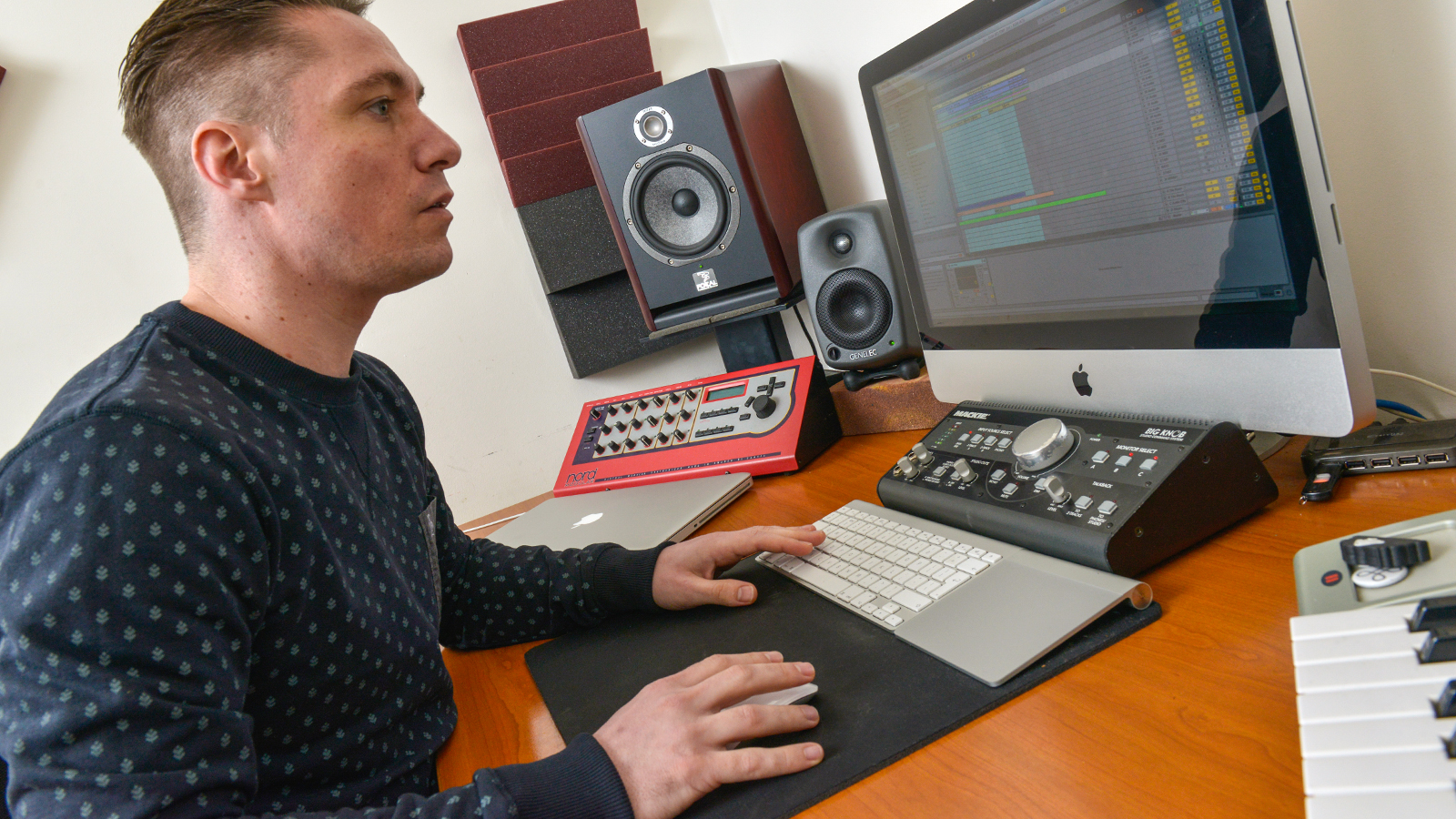
Is the mouse that's bundled with your PC a bit, well, Mickey Mouse? Perhaps you're looking to revolutionise your workflow with a multi-button wonder that'll speed you through the most repetitive of tasks? Or maybe you're worried about developing a repetitive strain injury and want something more ergonomic?
Whatever the reason for retiring your existing rodent, we've got your back, so get ready to scroll through our hands-on guide to buying the very best mouse for music production needs.
Mouse, trackball or trackpad?
MusicRadar's got your back
We're using the word 'mouse' somewhat loosely in this guide because some of you will be better off with a trackpad or trackpad.
Mouse
A true mouse has its advantages, familiarity for starters. Most of us have grown up using a mouse since kindergarten, and we've since developed the skills and dexterity needed to wield one effectively. So, switching to any other kind of input device will take time to get used to.
Modern premium mice are fast, precise, comfortable, reliable and cost-effective. Trading up from a frustrating chunk of plastic (Mus Frustratus) to a mouse that's a delight to use (Mus Delectatio) really isn't that costly when you factor in the potential efficiency savings.
Trackball
The primary advantage of a trackball is its compactness. Moving your cursor from one side of a 30" screen to the other with a mouse will typically require a foot of desk space (best move that coffee mug), while a trackball will take up less than a quarter of this. If your desk is already cluttered with controllers, interfaces, modules and mixers then a trackball can be a godsend.
Another significant advantage a trackball brings is that you can click a button without the risk of moving your cursor, a blessing when working with very precise selections. In comparison, even the slightest touch tends to nudge a mouse out of position.
Some manufacturers claim that trackballs lessen the risk of RSI too, because they don't need to be gripped and manhandled in the way that mice do.
Trackpad
Trackpads share similar advantages with trackballs, plus they can be sensitive to touch and gestures. Many of us who own or use laptops will have already mastered their use and they score highly in the looks department.
Do I need a mouse with programmable buttons?
If you find the immense enjoyment you get from producing music is being sapped by the common repetitive tasks required by your DAW then, in the name of all things holy, atheist or agnostic, go buy yourself a programmable mouse.
How often do you find yourself using your keyboard, or worse still your DAW's main menu, to pull up the mixer or loop a region? How long-winded a process is it to use the transport controls to rewind, forward wind or start playback immediately after you've repositioned the playhead?
Buy a programmable multi-button mouse and all these mundane tasks, together with many, many more, can be automated at a touch of a button. Freeing your time to do what you do best – being creative.
Should you buy a wired or wireless mouse?
Serious gamers write wireless mice off for being too slow and unresponsive, and they're right, up to a point. However, music producers and creators really don't need the same level of performance, so we recommend wireless over wired.
Wires just get in the way, and if you're trying to self-record yourself playing an instrument then it's often handy to be able to operate your DAW from a modest distance. Better to move your mouse to a grand piano than the other way around.
Wireless mice typically operate over Bluetooth or 2.4GHz radio frequencies (RF), with many products offering both options. RF offers lower latency but requires a USB receiver dongle, which will take up a precious USB slot on your PC. Bluetooth may be slower, but it's not noticeably so, and chances are your laptop or desktop already has a built in receiver.
Mouse sensitivity explained
Mouse sensitivity is expressed in dots per inch (dpi), so the higher the dpi rating the more sensitive the sensor and the faster and more precisely your cursor will move. Gamers favour very sensitive sensors, for obvious reasons, and we producers and creators also need a mouse that's going to work with a high level of precision.
Of course, you don't always want your mouse to be racing around the screen, so look for one that enables you to lower the dpi rating on the fly.
Ergonomics and comfort
When Steve Jobs and his team developed the first commercially available mouse back in 1984 they probably didn't foresee that, decades on, busy producers, creators and editors would be using very similar devices for 10 hours a day or more. They certainly wouldn't have had an inkling of the damage that kind of intense usage can cause our soft tissues, tendons and nerves.
Sadly, many mice still look pretty similar to Steve's original puck-like device, but fortunately there are alternatives. Brands, such as Kensington, Logitech and Contour have all developed ergonomic mice, including vertical models, which they claim prevent and alleviate RSI-type injuries. Trackballs and trackpads also enjoy a better rep for preventing such problems.
Everyone is different so, if you can, try a variety of solutions to see which one you prefer. The very best advice is to avoid using these peripherals for intense periods in the first place, which we accept is easier said than done. That said, a programmable mouse that increases your efficiency should free up more time away from your computer. Sounds like a smart buy to us.
Find out more about how we test music gear and services at MusicRadar.
Related buyer's guides
- Best laptops for music production: picks for musicians, producers and DJs
- Best PCs for music production: Macs and desktops
- Best computer monitors for music production: broaden your horizons
- Best studio desks: organise your recording studio space
- Best studio chairs: are you sitting comfortably in your home studio?
Want all the hottest music and gear news, reviews, deals, features and more, direct to your inbox? Sign up here.
When Simon's childhood classical guitar teacher boasted he 'enjoyed a challenge', the poor man had no idea how much he'd underestimated the scale of the task ahead. Despite Simon's lack of talent, the experience did spark a lifelong passion for music. His classical guitar was discarded for an electric, then a room full of electrics before Simon discovered the joys of keys. Against all odds, Simon somehow managed to blag a career as a fashion journalist, but he's now more suitably employed writing for MusicRadar and Guitar World. When not writing or playing, he can be found terrifying himself on his mountain bike.
